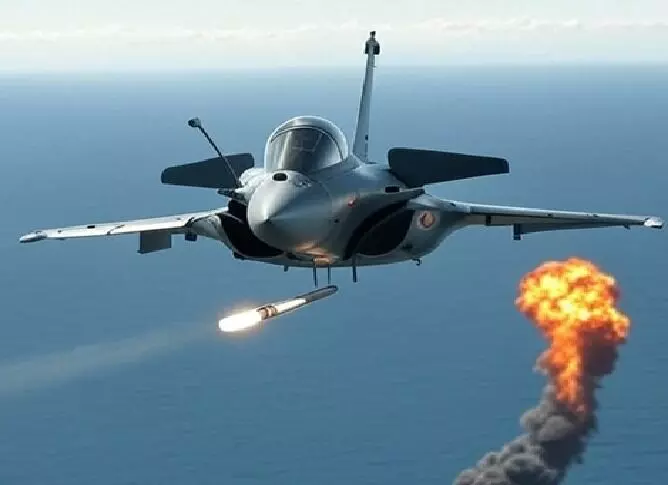Navigating Indonesia's Fighter Jet Dilemma: J-10C vs. Rafale

In the ever-evolving landscape of military aviation, Indonesia finds itself at a critical crossroads. The choice between China's J-10C and France's Rafale fighter jets is not merely about performance; it encompasses wider geopolitical implications and the future of Indonesia's defense strategy. With China extending an offer for the J-10C, a fighter jet touted for its affordability, Jakarta could be tempted to stray from its previously committed deal with France for the Rafale. But what does this mean for Indonesia?
The Allure of Affordability: Is the J-10C a Smart Choice?
The J-10C, often framed by Chinese media as a low-cost alternative to Western fighters, could seem appealing to a budget-conscious nation like Indonesia. Deputy Defense Minister Donny Ermawan Taufanto noted the initial stages of evaluating the aircraft's operational compatibility with existing Indonesian platforms. Given Indonesia's aging fleet dominated by older Russian models, the promise of new technology could make the J-10C an attractive proposition. However, affordability often comes with hidden costs, especially in defense acquisitions. The J-10C’s performance and operational history remain less impressive compared to the Rafale, which boasts advanced avionics and a proven combat record.
Strategic Autonomy: The Risks of Dependence on China
As Indonesia weighs its options, one must consider the long-term implications of integrating Chinese military hardware. The J-10C, while affordable, could tie Indonesia’s defense strategy to China, limiting its operational independence. Relying on Chinese technology for upgrades and maintenance could be detrimental, especially in times of geopolitical tension. Indonesia’s non-aligned strategy has historically allowed it to diversify its defense partnerships, but choosing the J-10C could compromise this flexibility, creating a dependency that may not be in the country’s best interests.
The Rafale: A Proven Asset with Strategic Benefits
On the other hand, the Rafale represents a different narrative. Acquired through a significant defense deal worth $8.1 billion, the Rafale is not just a fighter jet but a comprehensive system designed to integrate seamlessly into Indonesia's military framework. With superior range, unmatched electronic warfare capabilities, and a track record of operational success, the Rafale provides a robust solution to Indonesia's defense needs. The recent reaffirmation of Indonesia's commitment to the Rafale by French President Emmanuel Macron during his visit sends a strong signal of intent amidst rising uncertainty about the J-10C.
Balancing Modernization and Costs
Indonesia's defense modernization plan is ambitious, with interests spanning multiple platforms, from American F-15EX fighters to Turkish KAAN jets. The challenge lies in balancing modernization with budget constraints. With a defense budget of approximately $9 billion for 2024, large-scale acquisitions such as the Rafale deal represent a significant financial commitment. Adding the J-10C into the mix could strain resources further and complicate logistical operations given the diverse origins of Indonesia's fleet.
The Bigger Picture: Regional Implications
Ultimately, Indonesia's decision will have ramifications beyond its borders. In a region marked by increasing military competition, the implications of choosing the J-10C over the Rafale could alter the balance of power. As countries like India enhance their capabilities with advanced fighters like the Rafale, Indonesia must consider whether it wants to align itself with emerging powers like China or maintain ties with established partners like France. In this context, the choice is not just about which aircraft to acquire but about the kind of defense strategy Indonesia wishes to pursue in the broader geopolitical landscape.
As we move forward, it will be fascinating to see how Indonesia navigates this critical juncture. The stakes are high, and the implications of this decision will likely resonate for years to come.
